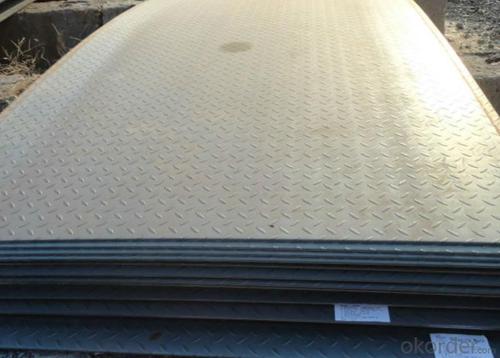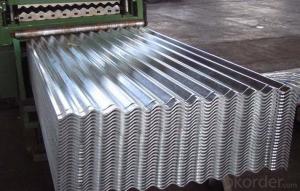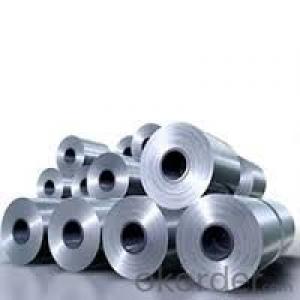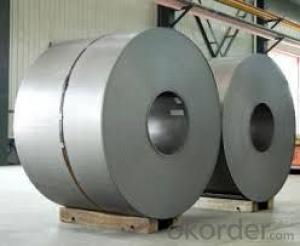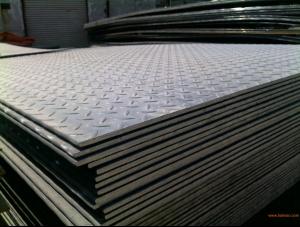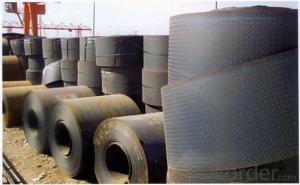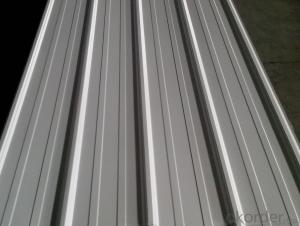High Quality Checkered Sheet
- Loading Port:
- Xingang Port
- Payment Terms:
- TT or LC
- Min Order Qty:
- 100MT m.t.
- Supply Capability:
- 10000MT/year m.t./month
OKorder Service Pledge
OKorder Financial Service
You Might Also Like
Specification of High Quality Checkered Sheet:
1.Advantages of our High Quality Checkered Sheet:
a) The unfairness of our checkered sheet: ≤ 10mm/mtr
b) The surface of our hot rolled checkered steel sheet is free from bubble, scab, crack, fold, edge delamination and so on.
c) The height of our hot rolled checkered steel sheet will be maintained between 0.2~0.3 times to thickness of steel substrate, but more than 0.5mm at least.
2. Other details of High Quality Checkered Sheet:
Thickness | 2.5-8.0mm |
Width | 1250mm,1500mm,1800mm,2000mm.,2500mm or as required |
Length | 2000-12000mm |
Standard | GB |
Material | Q345 B |
Tehnique | Hot Rolled |
Payment | TT ,L/C |
Packing | Standard seaworthy packing or as required |
Market | Mild east, Africa, Asia North/South America, Europe |
Certificate | SGS China |
3. The regular sections we provide are shown in the below table:
Base Thickness(MM) | AllowedTolerance ofBaseThickness(%) | Theoretical Mass (KG/M²) | ||
The Pattern | ||||
Rhombus | Beam | Pea | ||
2.5 | ±0.3 | 21.6 | 21.3 | 21.1 |
3.0 | ±0.3 | 25.6 | 24.4 | 24.3 |
3.5 | ±0.3 | 29.5 | 28.4 | 28.3 |
4.0 | ±0.4 | 33.4 | 32.4 | 32.3 |
4.5 | ±0.4 | 37.3 | 36.4 | 36.2 |
5.0 | 0.4~-0.5 | 42.3 | 40.5 | 40.2 |
5.5 | 0.4~-0.5 | 46.2 | 44.3 | 44.1 |
6.0 | 0.5~-0.6 | 50.1 | 48.4 | 48.1 |
7.0 | 0.6~-0.7 | 59.0 | 52.5 | 52.4 |
8.0 | 0.7~-0.8 | 66.8 | 56.4 | 56.2 |
4. Chemical Composition of Sample:
| Chemical Composition | ||||
| C | Si | Mn | P | S |
Q345B | ≤0.20 | ≤0.55 | 1.00-1.60 | ≤0.040 | ≤0.040 |
Applications of Hot Rolled Checkered Steel Sheet:
1.Definition: The hot rolled steel sheet with raised pattern on surface. The raised pattern could be shaped as rhombus,bean or pea. There is not only one kind of pattern on the checkered steel sheet, but also a complex of two or more than two kinds of pattern on surface of one checkered steel sheet. It also could be called as grid steel sheet.
2.Character: The Hot Rolled Checkered Steel Sheet possesses a variet of advantages, such as beauty in appearance,skip resistance and saving steel material.Generally speaking,in order to test the mechanical property or the quality of hot rolled checkered steel sheet, the shaping rate and the pattern height should be tested primarily.
3. In conclusion, the hot rolled checkered steel sheet can usually be used in the industry of ship-building,boiler,automobil,tractor,train- building and architecture. In details, there are many demands for hot rolled checkered steel sheet to make floor,ladder at workshop,work frame pedal,ship deck,car floor and so on.
Package & Delivery of Hot Rolled Checkered Steel Plate:
1. The items to be prepared for packing include: narrow steel strip, crude steel belt or edge angle steel, kraft paper or galvanized sheet.
2. The hot rolled checkered steel plate should be wrapped with kraft paper or galvanized sheet ouside, and it should be bundled with narrow steel strip, three or two narrow steel strip in longitudinal direction,and the other three or two strips in transverse direction. Furthermore, in order to fix the hot rolled checkered steel sheet and avoid the strip at edge shall be broken, the crude steel belt cut into square should be put under the narrow steel strip on the edge. Of course, the hot rolled checkered steel sheet could be bundled without kraft paper or galvanized sheet. It depends on customer’s requirement.
3. In consideration of the transportaion from mill to loading port, the truck will be usually used. And the maximum quantity for each truck is 40mt.
4. All in all, we could do in accordance with customer's request.
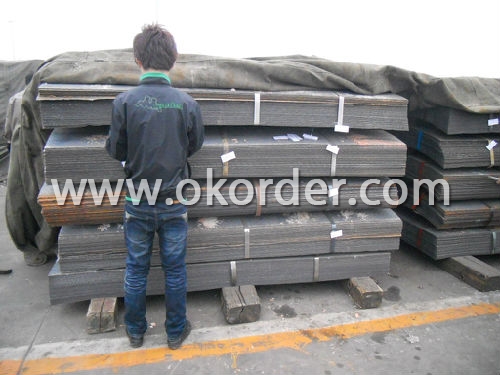
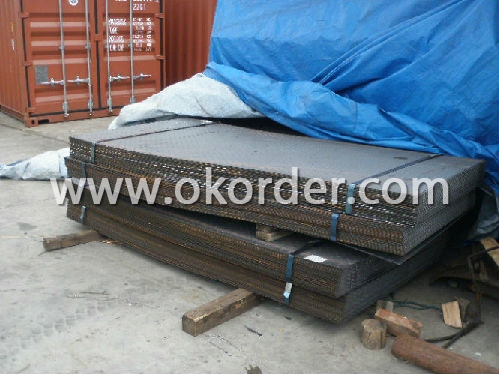
- Q: How is the quality of steel sheets determined?
- The quality of steel sheets is determined by several factors and tests. One of the primary factors is the chemical composition of the steel, which includes the presence and percentage of various elements such as carbon, manganese, silicon, and alloying elements like chromium, nickel, and molybdenum. The specific composition affects the steel's strength, durability, and resistance to corrosion. Another important aspect is the mechanical properties of the steel, which are assessed through tests such as tensile strength, yield strength, elongation, hardness, and impact resistance. These tests help determine the steel's ability to withstand applied forces and deformation without failure. Surface quality is also crucial in determining the quality of steel sheets. The surface should be free from defects like cracks, scratches, pits, or any other irregularities that could affect the performance or appearance of the steel. Furthermore, the thickness and uniformity of the steel sheets are crucial factors. Thickness is measured using methods like ultrasonic gauges or micrometers to ensure compliance with the required specifications. Any deviations from the specified thickness can affect the structural integrity and performance of the steel sheets. Additionally, the steel sheets undergo various tests to assess their weldability, formability, and machinability, which determine their suitability for specific applications. These tests help evaluate the steel's behavior during fabrication processes like welding, bending, or machining. Overall, the quality of steel sheets is determined by a comprehensive evaluation of their chemical composition, mechanical properties, surface quality, thickness, and other specific performance characteristics. These assessments ensure that the steel sheets meet the required standards and are suitable for the intended applications.
- Q: What are the different types of steel sheet finishes for automotive applications?
- The different types of steel sheet finishes for automotive applications include hot-dipped galvanized, electrogalvanized, galvannealed, and bare steel.
- Q: Can steel sheets be used for water tanks or reservoirs?
- Yes, steel sheets can be used for water tanks or reservoirs. Steel is a durable and strong material that can withstand the pressure and weight of water. Additionally, steel is resistant to corrosion, which makes it a suitable choice for storing water. However, proper coating and maintenance are necessary to prevent rusting and ensure the longevity of the tank or reservoir.
- Q: How long do steel sheets last?
- Steel sheets can last for many years, often surpassing the lifespan of other materials. The longevity of steel sheets depends on various factors such as the quality of the steel, the conditions it is exposed to, and how well it is maintained. In general, high-quality steel sheets that are properly installed and maintained can last for several decades or even longer. However, if steel sheets are exposed to harsh environments, such as extreme temperatures, humidity, or corrosive substances, their lifespan may be reduced. Regular inspections, cleaning, and maintenance can help extend the lifespan of steel sheets and ensure their durability over time.
- Q: How do steel sheets perform in chemical resistance?
- Steel sheets generally have good chemical resistance due to their high corrosion resistance. The presence of alloying elements such as chromium, nickel, and molybdenum enhances their ability to withstand exposure to various chemicals. However, their performance may vary depending on the specific chemical and concentration involved. It is always advisable to consult the steel manufacturer or refer to corrosion resistance charts for accurate information on a case-by-case basis.
- Q: What is AO steel plate?
- The steel plate can be placed in the soft tissue without the need to remove periosteum and reduce the damage to the bone. The steel plate does not need to be completely shaped with the backbone, and it is feasible for minimally invasive percutaneous plate fixation
- Q: How do steel sheets perform in terms of scratch resistance?
- Steel sheets generally have good scratch resistance due to their strong and durable nature. They are less susceptible to scratching compared to other materials, making them suitable for various applications where scratching is a concern. However, the scratch resistance may vary depending on the specific type and finish of the steel sheet.
- Q: What is the difference between hot rolled and cold rolled steel sheets?
- Hot rolled steel sheets are made by heating the steel above its recrystallization temperature and then rolling it to the desired thickness. This process makes the steel more malleable and ductile, resulting in a rougher surface finish and a less precise dimensional tolerance. On the other hand, cold rolled steel sheets are produced by cooling the hot rolled steel and then further rolling it at room temperature. This process enhances the strength and hardness of the steel while providing a smoother surface finish and tighter dimensional tolerances.
- Q: What are the fire resistance properties of steel sheets?
- Steel sheets have excellent fire resistance properties due to their high melting point and low thermal conductivity. They do not catch fire or contribute to the spread of flames, making them a reliable choice for construction in fire-prone areas. Additionally, steel maintains its structural integrity even at high temperatures, providing enhanced protection and stability during a fire incident.
- Q: Are steel sheets resistant to termites?
- Steel sheets are not immune to termites, contrary to materials like concrete or steel. Termites can effortlessly invade steel sheets and devour the wood framing or any organic substances that might be there. Thus, it is crucial to implement necessary precautions to safeguard steel sheets from termite infestation. These measures may include utilizing termite barriers, treating the adjacent soil, or routinely examining and upkeeping the region to deter termite intrusion and destruction.
1. Manufacturer Overview
| Location | Qianan, China |
| Year Established | 2005 |
| Annual Output Value | Above US$ 1,300 Million |
| Main Markets | Mid East; Eastern Europe; North America |
| Company Certifications |
2. Manufacturer Certificates
| a) Certification Name | |
| Range | |
| Reference | |
| Validity Period |
3. Manufacturer Capability
| a) Trade Capacity | |
| Nearest Port | Tianjin |
| Export Percentage | 40% - 60% |
| No.of Employees in Trade Department | 21-50 People |
| Language Spoken: | English; Chinese |
| b) Factory Information | |
| Factory Size: | Above 800,000 square meters |
| No. of Production Lines | Above 10 |
| Contract Manufacturing | OEM Service Offered; |
| Product Price Range | High; Average |
Send your message to us
High Quality Checkered Sheet
- Loading Port:
- Xingang Port
- Payment Terms:
- TT or LC
- Min Order Qty:
- 100MT m.t.
- Supply Capability:
- 10000MT/year m.t./month
OKorder Service Pledge
OKorder Financial Service
Similar products
Hot products
Hot Searches
Related keywords



